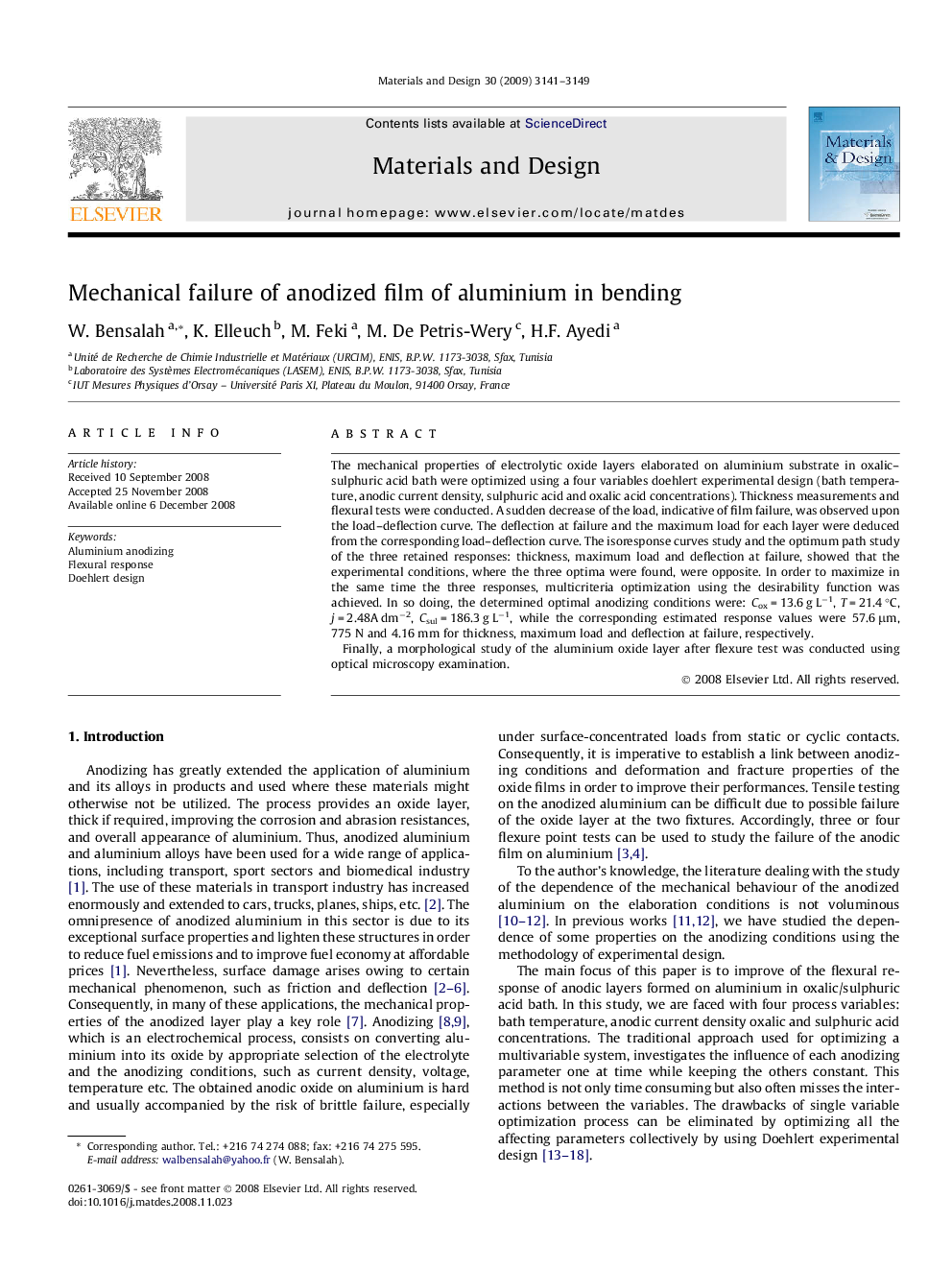| Article ID | Journal | Published Year | Pages | File Type |
|---|---|---|---|---|
| 832587 | Materials & Design (1980-2015) | 2009 | 9 Pages |
The mechanical properties of electrolytic oxide layers elaborated on aluminium substrate in oxalic–sulphuric acid bath were optimized using a four variables doehlert experimental design (bath temperature, anodic current density, sulphuric acid and oxalic acid concentrations). Thickness measurements and flexural tests were conducted. A sudden decrease of the load, indicative of film failure, was observed upon the load–deflection curve. The deflection at failure and the maximum load for each layer were deduced from the corresponding load–deflection curve. The isoresponse curves study and the optimum path study of the three retained responses: thickness, maximum load and deflection at failure, showed that the experimental conditions, where the three optima were found, were opposite. In order to maximize in the same time the three responses, multicriteria optimization using the desirability function was achieved. In so doing, the determined optimal anodizing conditions were: Cox = 13.6 g L−1, T = 21.4 °C, j = 2.48A dm−2, Csul = 186.3 g L−1, while the corresponding estimated response values were 57.6 μm, 775 N and 4.16 mm for thickness, maximum load and deflection at failure, respectively.Finally, a morphological study of the aluminium oxide layer after flexure test was conducted using optical microscopy examination.
